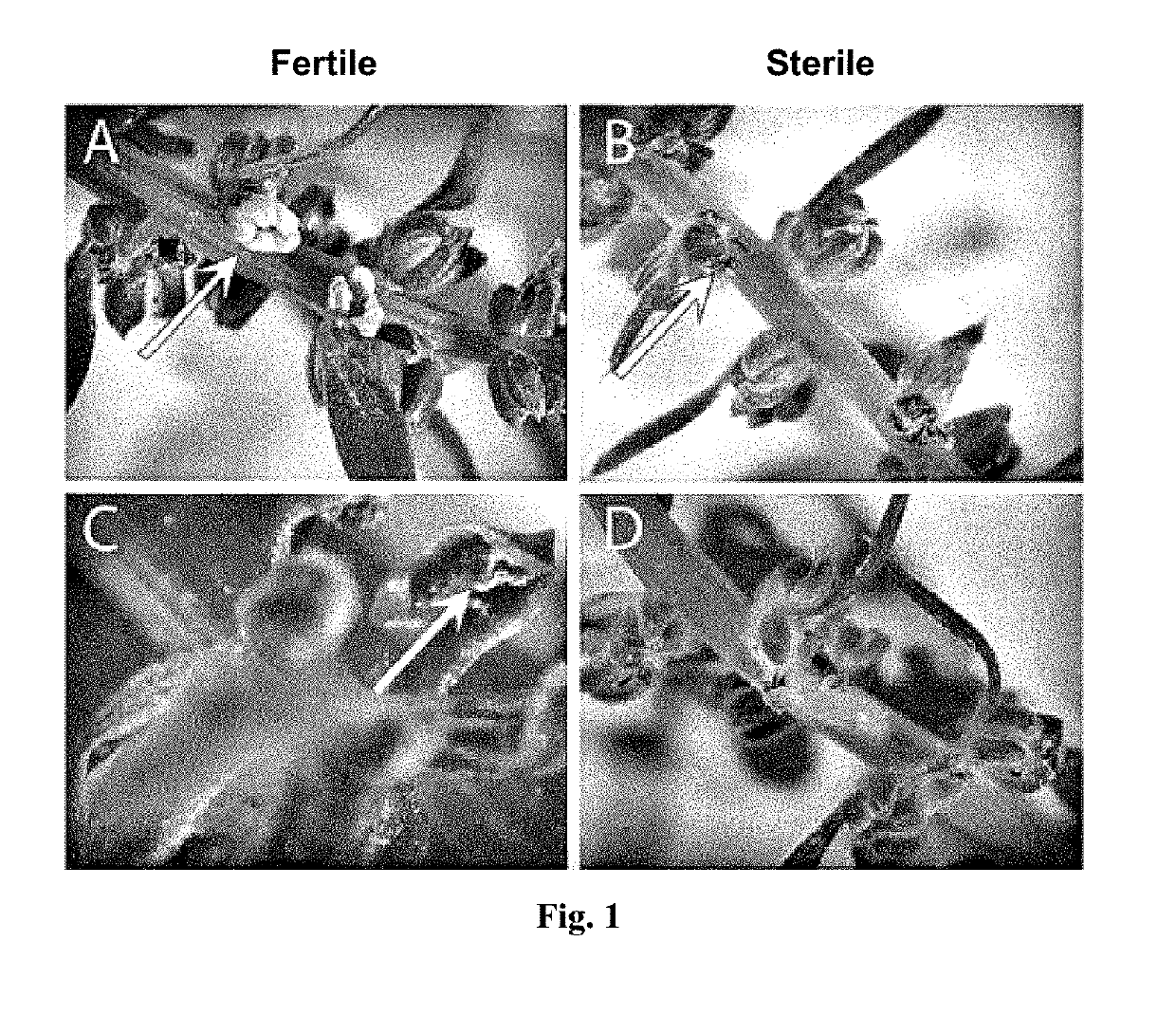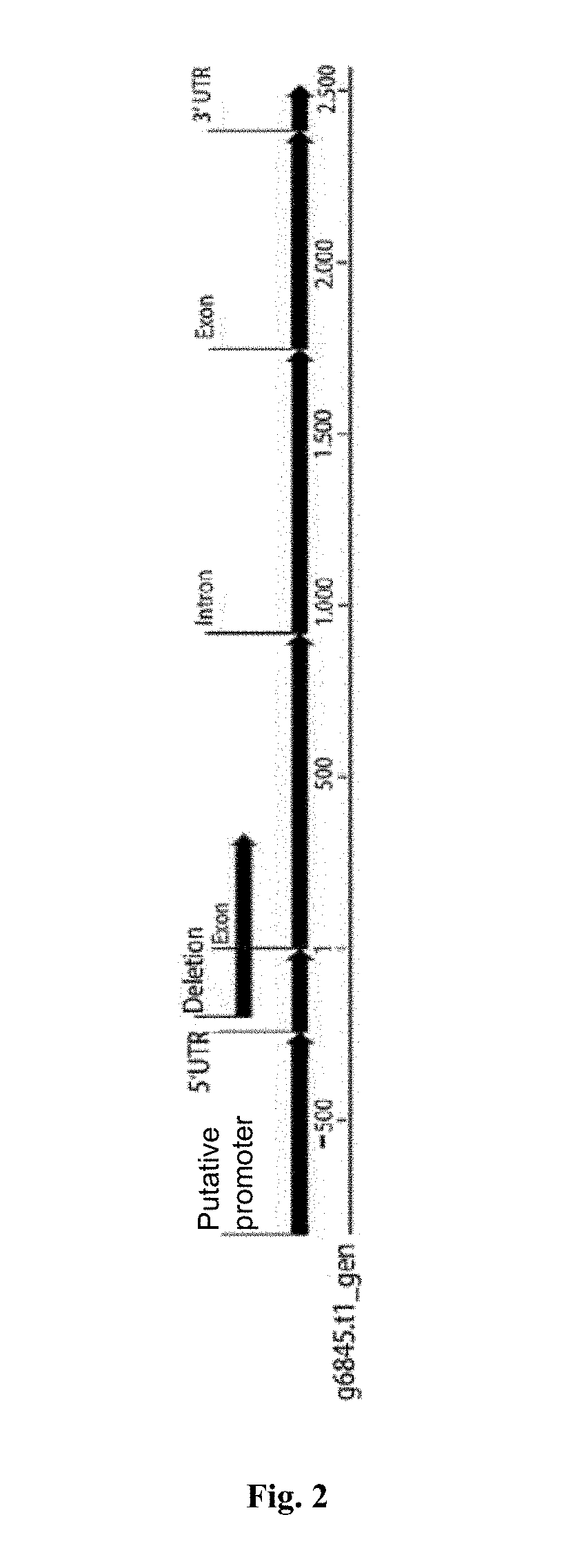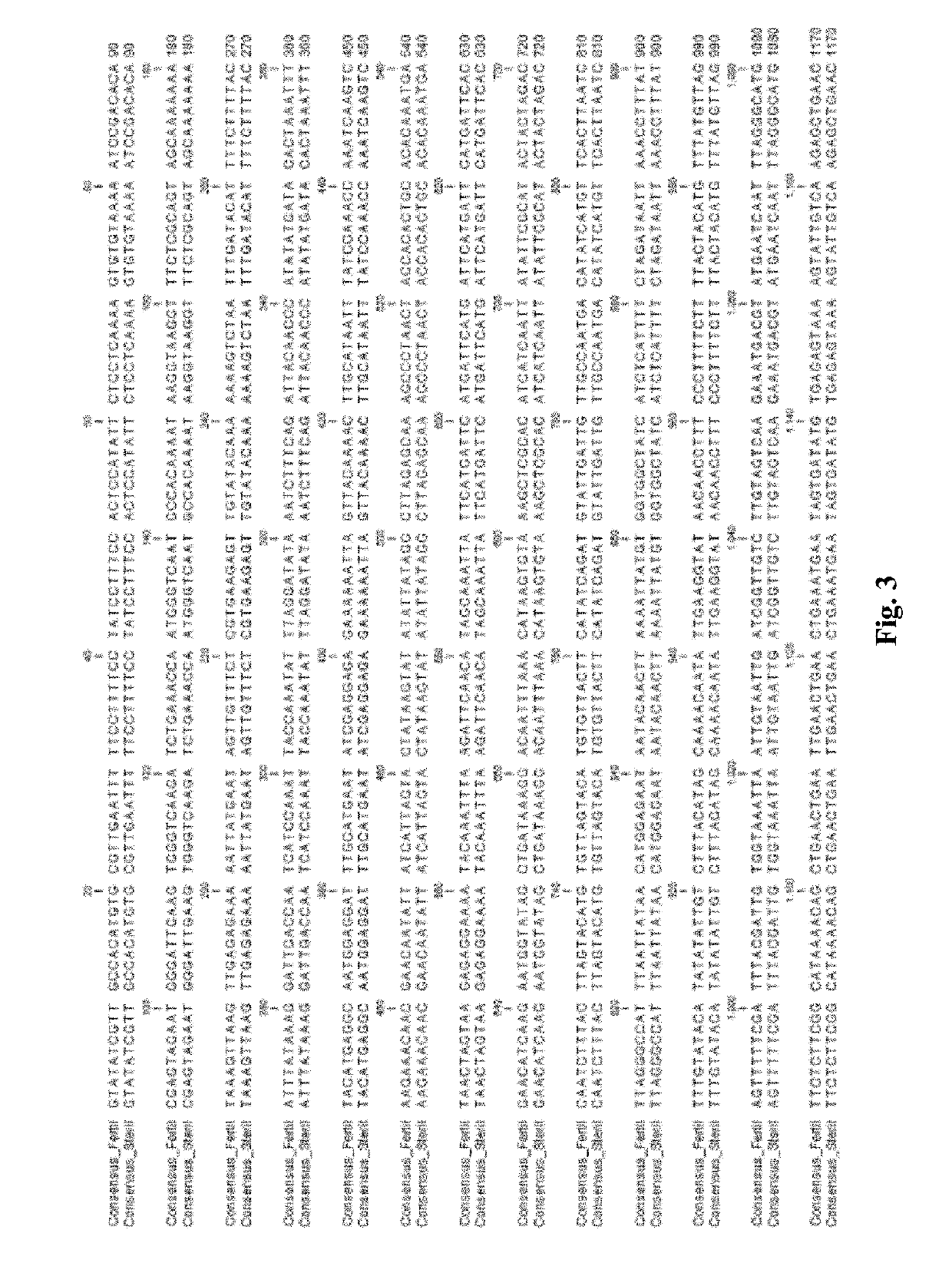Nucleus-Encoded Male Sterility Through Mutation In Cytochrome P450 Oxidase
a cytochrome p450 and p450 technology, applied in the field of labor-intensive breeding programs, can solve the problems of a large amount of planning and production effort, complex logistics, and extreme labor-intensive protocols, and achieve the effect of restoring fertility and simplifying labor-intensive breeding programs
- Summary
- Abstract
- Description
- Claims
- Application Information
AI Technical Summary
Benefits of technology
Problems solved by technology
Method used
Image
Examples
examples
[0157]1. Identification of a Locus that Causes Nucleus-Encoded Male Sterility
[0158]A donor with the internal label C311 [2043_K5] was used as the starting plant for identifying a locus that causes nucleus-encoded male sterility in sugar beets, which displays a recessive, nucleus-encoded, male sterile phenotype (working name gst). The presence and zygotic degree of the fundamental trait expression gst locus from this donor cannot, however, be checked in advance (i.e. before flowering) in the test material. Instead, a large number of putative sterile plants must be brought to the flowering stage in the field, or in a selfing block (S-block). Flowering plants are then manually examined for fertility or sterility, respectively (FIG. 1). Fertile individuals can subsequently be removed, and seed from sterile individuals can be harvested.
[0159]For a genetic and physical limitation of the gst locus that causes nucleus-encoded male sterility, a divided sugar beet mapping population for the t...
PUM
| Property | Measurement | Unit |
|---|---|---|
| pH | aaaaa | aaaaa |
| pH | aaaaa | aaaaa |
| length | aaaaa | aaaaa |
Abstract
Description
Claims
Application Information
 Login to View More
Login to View More - R&D
- Intellectual Property
- Life Sciences
- Materials
- Tech Scout
- Unparalleled Data Quality
- Higher Quality Content
- 60% Fewer Hallucinations
Browse by: Latest US Patents, China's latest patents, Technical Efficacy Thesaurus, Application Domain, Technology Topic, Popular Technical Reports.
© 2025 PatSnap. All rights reserved.Legal|Privacy policy|Modern Slavery Act Transparency Statement|Sitemap|About US| Contact US: help@patsnap.com



